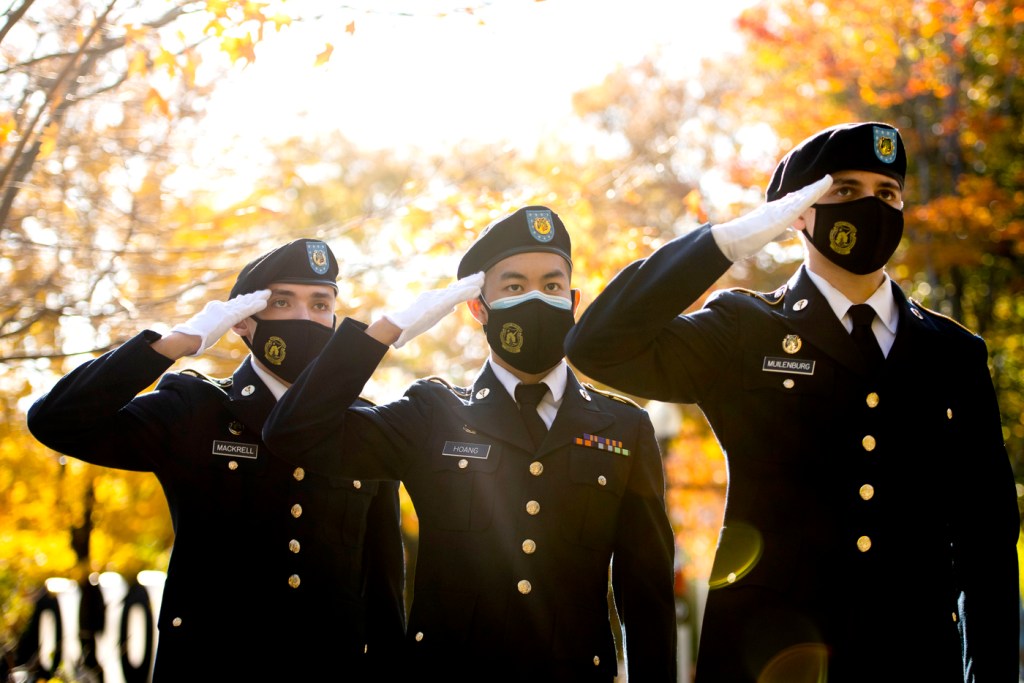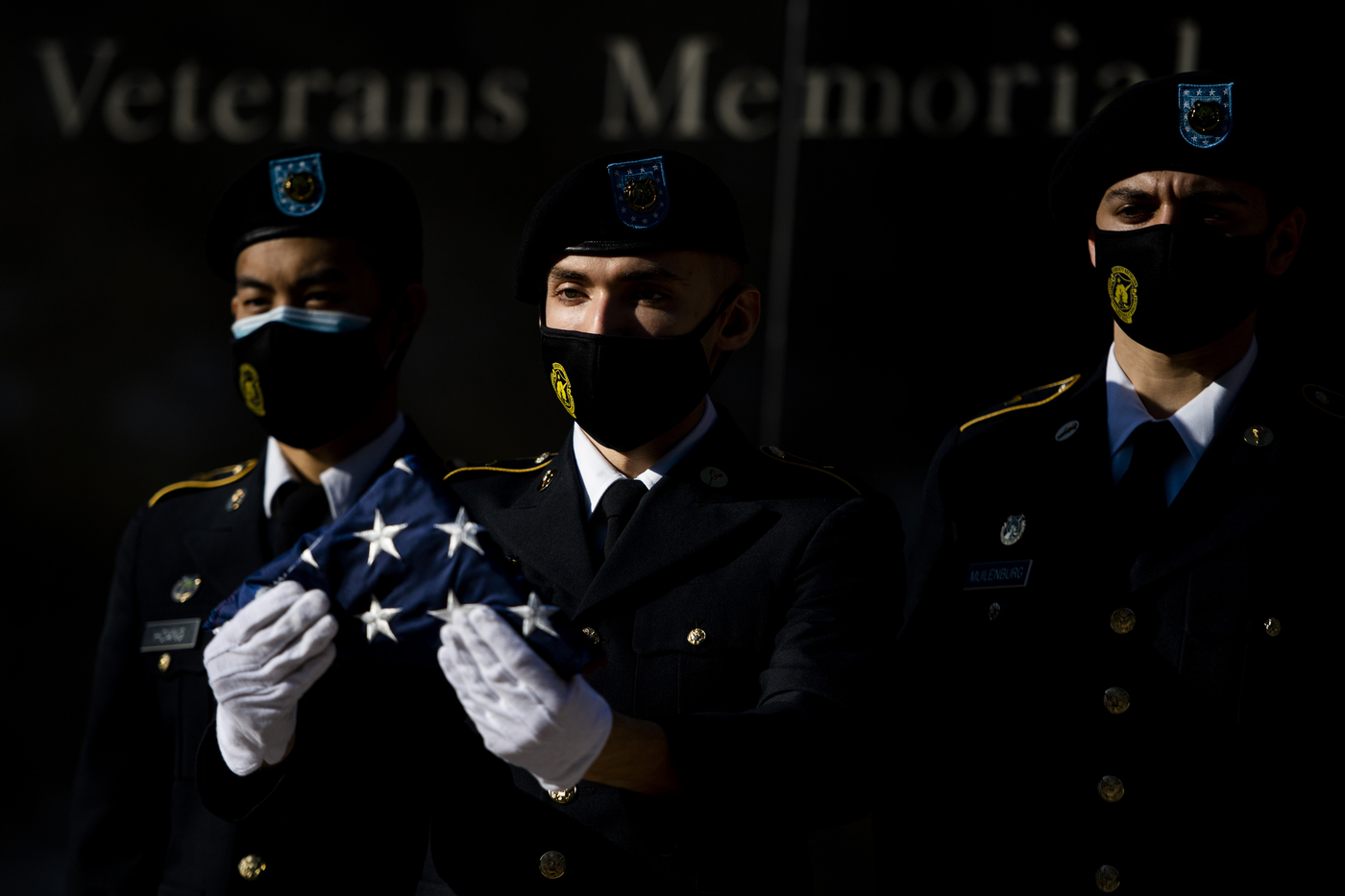Northeastern ROTC marks 70 years

Jenna Majeski didn’t think she’d join the Northeastern University Reserve Officers’ Training Corps.
Despite deep family influence—many members of her family have served in the U.S. military—the 22-year-old had decided while still in high school that she would forge her own path.
“One reason why I didn’t go to ROTC in the first place is I didn’t fully understand how it worked,” she says.
Then came her sophomore year, and with it, a feeling that she needed more purpose, more involvement. She signed up and was immediately taken by the “strong culture” of service and “selfless devotion.”
“It was definitely like a whirlwind experience,” Majeski says. “You come in and everyone knows so much. It felt like jumping into something that I really had no exposure to before.”
The Northeastern Army ROTC program turns 70 this year, a milestone Majeski, who’s risen inside the program’s ranks to cadet command sergeant major, can personally relate to: Her grandfather also was a Northeastern ROTC cadet.
Though he ultimately didn’t end up graduating from the program, or joining the armed forces, his granddaughter is heeding the call to serve. Majeski is contracted to be a medical service officer in the Army for at least eight years, and is gearing up for that transition.
Founded in January 1951, the Northeastern Army ROTC has commissioned more than 4,000 graduating cadets into service roles in the U.S. Army, U.S. Army Reserve, and the Army National Guard. Cadets get to choose among any Army branch once commissioned.
Northeastern formed the ROTC department to support the Army Corps of Engineers and Signal Corps.
Seventy years later, it’s still inspiring service among a generation of young graduates.


The year of its founding, Northeastern enrolled 886 men, which at the time made it one of the largest officer-cadet programs in the country on a non-military campus. In 1983, the university’s ROTC detachment was named the “Liberty Battalion,” a subordinate of the New England Brigade, a designation under which it still operates today.
Liberty Battalion trains roughly 120 cadets from campuses across the Boston area, including Wentworth Institute of Technology, Simmons University, Suffolk University, Emmanuel College, Regis College, Framingham State University, Massachusetts College of Pharmacy and Health Sciences, Emerson College, and Berklee College of Music. Northeastern University is the host institution.
Lt. Col. David Mun, professor of military science at Northeastern, says the cadets are at the heart of the university program. He says the ROTC typically recruits students fresh out of high school, progressing them through a four-year program that they’ll eventually grow to lead.
Life as a student-cadet is busy—physical fitness and tactical training in the early mornings, followed by a full schedule of classes and various extracurricular activities, Mun says. Not all cadets will join the military upon completion of their studies, but commissioning them is a major goal of the program.
“We like to think we are positively impacting anyone who comes in contact with our program,” Mun says.
Mun says the current class of cadets is a highly diverse group, with as many women as there are men. Many are high-achieving students, all with a “deep desire to serve.”
“They’re just incredible, in every sense,” he says. “They are all such incredibly intelligent people, and they’re all very active in their communities and involved in their universities and student bodies, so they’re extremely engaged.”
For media inquiries, please contact media@northeastern.edu.






